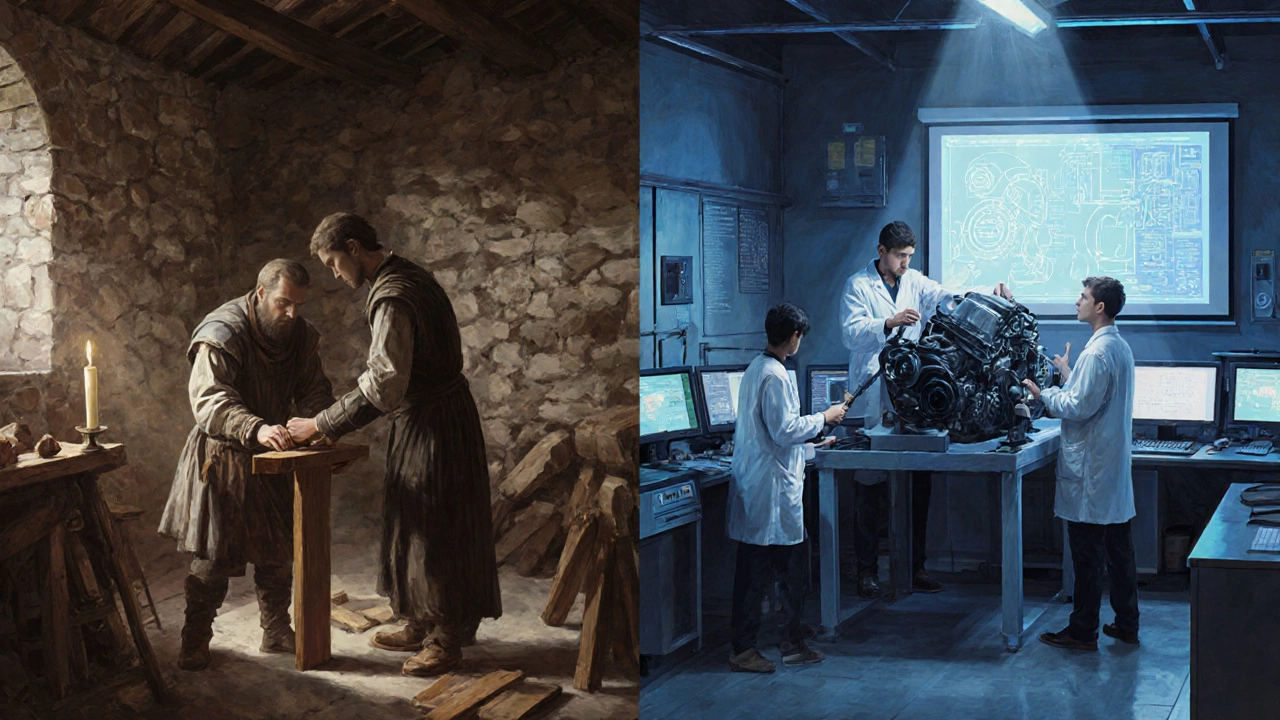When people hear the words vocation is a broad term that refers to a specific type of work or profession that requires specialized training or education, they often assume it means the same thing as a trade - a word that conjures images of electricians, plumbers, and carpenters. vocation vs trade is a common question among high‑school seniors, career‑changers, and anyone looking at vocational courses. This article unpacks the two concepts, highlights where they overlap, and shows how to choose the right path for your goals.
What Exactly Is a Vocation?
Vocational education is a system of learning that prepares students for specific occupations by combining classroom instruction with hands‑on practice. It embraces everything from health‑care aides to graphic designers. The key idea is that a vocation ties a person’s interests, aptitudes, and market demand together into a long‑term career outlook. In many countries, vocational programs sit beside traditional academic tracks, offering certificates, diplomas, or associate degrees. They often include a blend of theory, lab work, and real‑world projects.
What Is a Trade?
A trade is a specific skilled occupation that typically involves manual or technical work and is learned through an apprenticeship or on‑the‑job training. Trades are typically regulated by industry standards and may require licensing. Classic examples are plumbing, electrical work, welding, and masonry. While a trade is always a vocation, not every vocation belongs to a trade; many vocations are knowledge‑based (like culinary arts or digital marketing) and don’t fall under traditional trade classification.
Historical Roots: How the Terms Evolved
Both terms trace back to the Middle Ages. Guilds taught apprentices a trade, ensuring quality and protecting the public. As economies industrialized, the word “vocation” entered theological discourse, emphasizing a “calling” that could be spiritual or professional. In the 20th century, governments created vocational schools to meet the growing need for a technically skilled workforce, while trades remained rooted in apprenticeship models. Understanding this history helps explain why the two concepts overlap but aren’t identical.
Key Differences Between Vocation and Trade
| Aspect | Vocation | Trade |
|---|---|---|
| Scope | Broad - includes any career requiring specialized training | Narrow - focuses on manual or technical skilled occupations |
| Learning Path | Vocational courses, community colleges, online programs | Apprenticeship, on‑the‑job training, trade school |
| Certification | Certificates, diplomas, associate degrees | Licensing, journeyman status, trade‑specific credentials |
| Industry Regulation | Varies - often less formalized | Highly regulated - safety codes, building standards |
| Career Mobility | Can pivot to related fields (e.g., digital marketing → UX design) | Usually linear - master a trade, then specialize or start a business |
The table shows that a vocation is an umbrella term covering many professional routes, while a trade is a specific, often hands‑on, subset of that umbrella.

Overlap: When Vocation and Trade Meet
Many programs blur the line. For instance, a Technical College offers an associate degree in automotive technology. The curriculum includes theory (engine diagnostics) and practical shop work, satisfying both vocational education standards and trade‑specific competencies. Similarly, apprenticeships in culinary arts combine the artistry of cooking (a vocation) with the skill‑based rigor of a trade.
How to Decide Which Path Fits You
- Identify your interests. Do you enjoy working with your hands, solving mechanical puzzles, or building physical structures? That points toward a trade.
- Assess the required training length. Trades often require 2‑4 years of apprenticeship plus licensing exams. Vocational courses can be completed in 6‑12 months for a certificate.
- Research labor market data. Look at Skill Gap reports that highlight high‑demand occupations.
- Consider certification needs. Trades usually demand a state‑issued license; many vocations accept industry‑recognized certificates.
- Think about long‑term goals. If you plan to run your own business, a trade apprenticeship gives you the hands‑on credibility clients trust.
By walking through these steps, you can match your personal motivations to the appropriate educational route.
Impact on Career Pathways and Earnings
Data from the U.S. Bureau of Labor Statistics (2024) shows that median annual wages for trade occupations like electricians ($61,000) and plumbers ($58,000) often exceed those for many vocational roles such as medical assistants ($38,000) or graphic designers ($45,000). However, vocational careers can offer faster entry into the workforce, lower tuition costs, and greater flexibility for remote or freelance work.
Role of Apprenticeship in Bridging the Gap
An apprenticeship blends on‑the‑job training with classroom instruction, effectively turning a vocational course into a trade certification. In Canada, the Red Seal program standardizes apprenticeship qualifications across provinces, making the credential portable. In the UK, the Modern Apprenticeship framework provides Level 3 and Level 4 qualifications that count toward both vocational diplomas and trade licences.

Future Trends: How Technology Is Shaping Both Worlds
Emerging technologies like augmented reality (AR) and virtual reality (VR) are revolutionizing trade training. A welding apprentice can now practice in a simulated environment before handling real metal. At the same time, online platforms (e.g., Coursera, Udemy) are expanding vocational education, offering micro‑credentials in data analysis, digital marketing, and cybersecurity. The line between vocation and trade is becoming more fluid, but the core distinction-breadth versus specificity-remains.
Quick Checklist: Is Your Desired Career a Vocation or a Trade?
- Does the role require a formal license or journeyman status? → Trade
- Is the training mainly classroom‑based with a short certificate? → Vocation
- Do industry bodies (e.g., Trade Union) regulate the occupation? → Trade
- Is the career path adaptable across multiple sectors (e.g., IT support → cybersecurity)? → Vocation
- Will you be expected to work on physical infrastructure or equipment? → Trade
Frequently Asked Questions
Is a trade considered a type of vocation?
Yes. All trades are vocations because they involve specialized work, but not every vocation is a trade. Vocations also include knowledge‑based careers like digital marketing or nursing that don’t require traditional trade licensing.
Do I need a college degree to enter a trade?
Usually no. Most trades rely on apprenticeships and certification exams. Some community colleges offer associate degrees that complement trade skills, but a four‑year degree isn’t mandatory.
Can a vocational certificate be upgraded to a trade license?
In many cases, yes. For example, a certificate in HVAC technology can count toward the hours required for an apprentice program, eventually leading to a licensed trade technician status.
Which path typically earns more in the first five years?
Trades often start with higher hourly wages because of the skilled‑labor shortage. However, some vocational fields like software testing or digital marketing can quickly surpass trade earnings, especially with freelance work.
Is there a demand for both vocations and trades in 2025?
Absolutely. The World Economic Forum’s 2024 report highlights a growing skill gap in both manual trades (electricians, pipefitters) and knowledge‑based vocations (data analysis, cybersecurity). Investment in training programs remains strong across the board.
Next Steps: Mapping Your Own Path
1. Write down three activities you enjoy most - whether it’s fixing things, designing graphics, or helping patients.
2. Search local Career Path resources (community college catalogs, apprenticeship registries, industry‑specific job boards).
3. Compare program length, cost, and certification requirements. Use the checklist above to decide if you’re leaning toward a trade or a broader vocation.
4. Reach out to professionals in your target field. A short informational interview can reveal whether the day‑to‑day work matches your expectations.
5. Enroll in a short introductory course or shadow a professional for a week. Real‑world exposure often makes the decision clear.
Whether you end up in a trade workshop or a modern vocational classroom, the key is aligning your passion with market demand. Both routes offer solid career foundations - the choice simply hinges on how specific you want your skill set to be.











